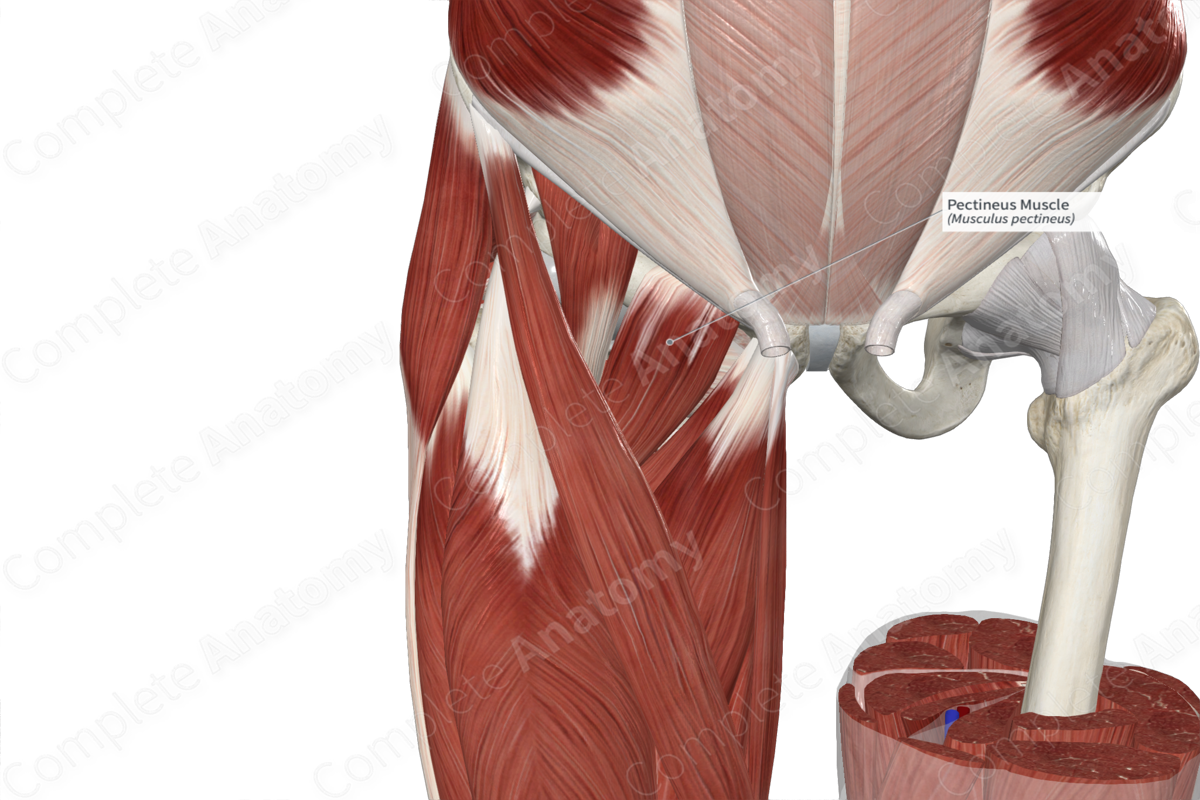
Quick Facts
Origin: Superior pubic ramus.
Insertion: Pectineal line of femur.
Action: Adducts and flexes thigh at hip joint.
Innervation: Femoral (L2-L3) and obturator (L2-L3) nerves.
Arterial Supply: Medial circumflex femoral and obturator arteries.
Related parts of the anatomy
Origin
The pectineus muscle originates from the:
- superior pubic ramus;
- adjacent fascia.
Insertion
The fibers of the pectineus muscle travel inferolaterally and insert, via a broad tendon, onto the pectineal line of the femur.
Key Features & Anatomical Relations
The pectineus muscle is found in the medial compartment of the thigh; however, due to its innervation and actions, it can also be considered a muscle of the anterior compartment of the thigh. It is a short, flat, quadrilateral type of skeletal muscle.
It is located:
- anterior to the obturator externus, adductor magnus and adductor brevis muscles;
- posterior to the femoral vessels;
- medial to the capsule of the hip joint and the iliopsoas muscle;
- lateral to the adductor longus muscle.
Actions
The pectineus muscle is involved in multiple actions:
- adducts the thigh at the hip joint;
- flexes the thigh at the hip joint (Standring, 2016).
Additionally, the pectineus muscle may be involved in medial and lateral hip rotation, depending on the position of the hip joint. Flexion and abduction intensify lateral rotation, while extension and adduction intensify medial rotation (Freedman, Ross and Gayle, 2008; Reimann, Sodia and Klug, 1996).
References
Freedman, A., Ross, S. and Gayle, R. (2008) 'Teaching “Not So Exact” Science: The Controversial Pectineus', The American Biology Teacher, 70, pp. e34-e36.
Reimann, R., Sodia, F. and Klug, F. (1996) '[Controversial rotation function of certain muscles in the hip joint]', Ann Anat, 178(4), pp. 353-9.
Standring, S. (2016) Gray's Anatomy: The Anatomical Basis of Clinical Practice. Gray's Anatomy Series 41st edn.: Elsevier Limited.
Actions
The pectineus muscle is involved in multiple actions:
- adducts the thigh at the hip joint;
- flexes the thigh at the hip joint (Standring, 2016).
Additionally, the pectineus muscle may be involved in medial and lateral hip rotation, depending on the position of the hip joint. Flexion and abduction intensify lateral rotation, while extension and adduction intensify medial rotation (Freedman, Ross and Gayle, 2008; Reimann, Sodia and Klug, 1996).
Learn more about this topic from other Elsevier products
Pectineus: What Is It, Location, Function, and More

Pectineus is a flat quadrangular muscle situated in the upper portion of the thigh. The pectineus muscle belongs to a group of muscles Learn with Osmosis





